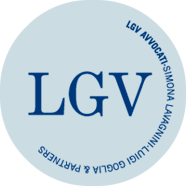PUBLISHED THE COMMON PRACTICE “USE OF A TRADEMARK IN A FORM DIFFERING FROM THE ONE REGISTERED” DRAFTED BY EUIPN
06/11/2020
On 15 October 2020, the Intellectual Property Offices of the Member States of the European Union published the Common Practice on the use of trademarks in a form different from the one in which they were registered, drafted by the European Union Intellectual Property Network (EUIPN).
The issue
The problem concerning the use of trademarks in a form other than the registered one is relevant with regard to the decadence for non-use of the trademark. National legislation (Articles 24 and 26 CPI) and European legislation (Articles 18 and 54 EU Regulation 2017/1001), in fact, establishes that a trademark is subject to revocation if it is not effectively used by the owner during the 5 years following registration or if its use is suspended for an uninterrupted period of 5 years.
Moreover, the above mentioned law provides that the use of the trademark in a modified or different form from the registered one is considered relevant unless the distinctive character as registered is altered.
The Common Practice intervenes on this aspect and aims at providing useful indications to assess whether the use of the trademark in a modified form alters its distinctive character, causing as a consequence the irrelevance of its use for the purposes of revocation. The importance of this publication is due to the fact that often in company practice changes, revisions or updates are made to registered trademarks over time.
The Common Practice
The published text is the result of a process of consultation with the national intellectual property offices of the EU, EUIPO and international partners that started in October 2017 and, as anticipated, aims to identify a set of homogeneous principles and canons to assess when changes to a sign lead to the alteration of the distinctive character of the trademark actually registered. In particular, the Common Practice assesses the impact that additions, omissions and changes in characteristics have on the distinctive character of a word, figurative or mixed mark.
The EUIPN identifies two key steps to make this assessment. First, the registered trademark must be considered with reference to its distinctive and visually dominant elements in order to determine which of them contribute to the distinctive character of the sign. Secondly, once these elements have been identified, it is necessary to establish whether these elements exist in the use of the sign which is made in practice through direct comparison between the two signs and by assessing in practice both the differences and the effect they have on the original mark.
In order to make it easier to understand, the Office proceeds with the listing of some examples, including:

In this first case, the Office maintains that the added figurative element does not interact with the trademark as registered and is perceived by the public regardless of the sign used. For this reason, the introduction of the figurative part (the fish) does not affect the distinctive character of the sign, which remains unchanged.

In the second example, on the other hand, a second figurative element is added to the registered trademark which, in the opinion of the Office, alters its distinctive character. In particular, the addition of the second figurative element implies the creation of a new concept (big fish eats small fish).
As far as the application of the Common Practice in administrative judgements is concerned, each Member State has indicated both the date of implementation and which procedures will be applied. As far as Italy is concerned, the Common Practice will only become applicable in proceedings instituted after 15 January 2021. Consequently, all proceedings that are pending but were introduced prior to that date are excluded.
Conclusions
Although the assessment of the actual use of a trademark is to be considered on a case-by-case basis, we believe that the Common Practice is a useful guide to facilitate and homogenise the decisions of national intellectual property offices and individual Courts.
The full text of the Common Practice is available at the following address: https://euipo.europa.eu/tunnel-web/secure/webdav/guest/document_library/contentPdfs/about_euipo/who_we_are/common_communication/common_communication_cp8_en.pdf
Paolo Passadori
